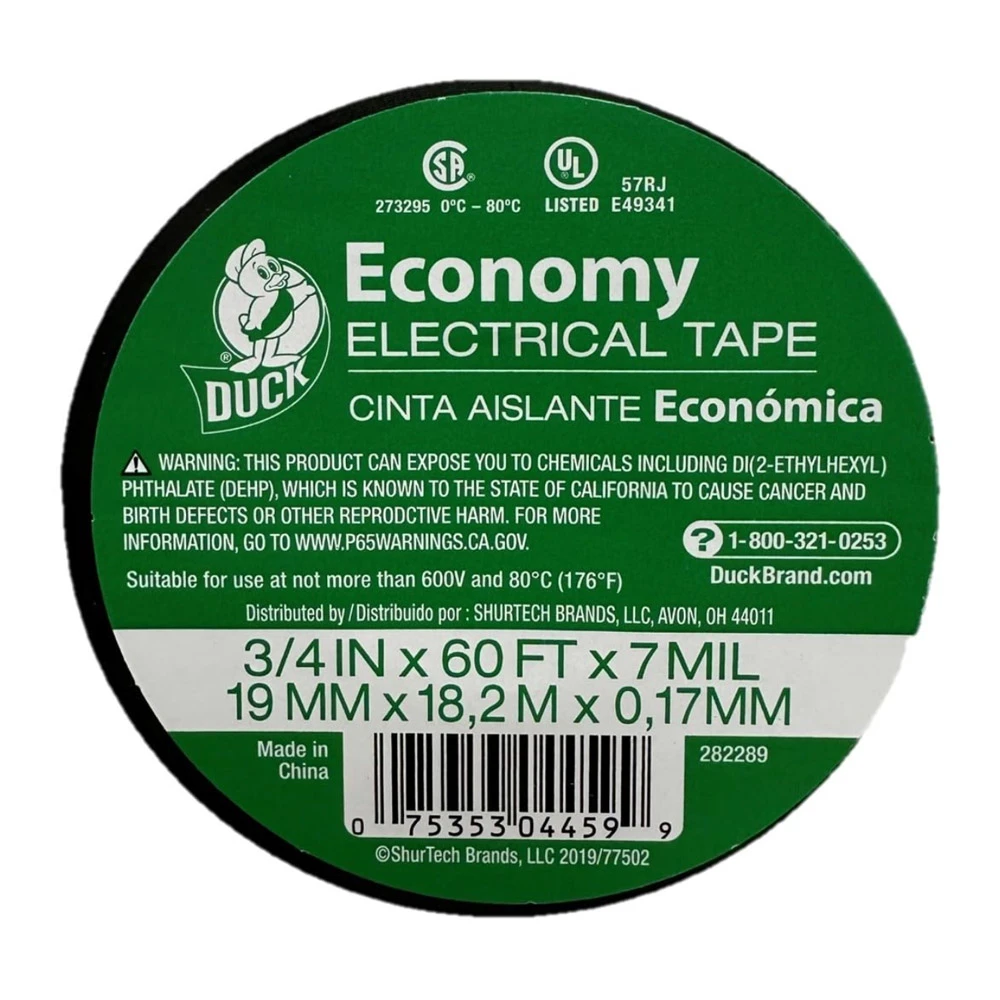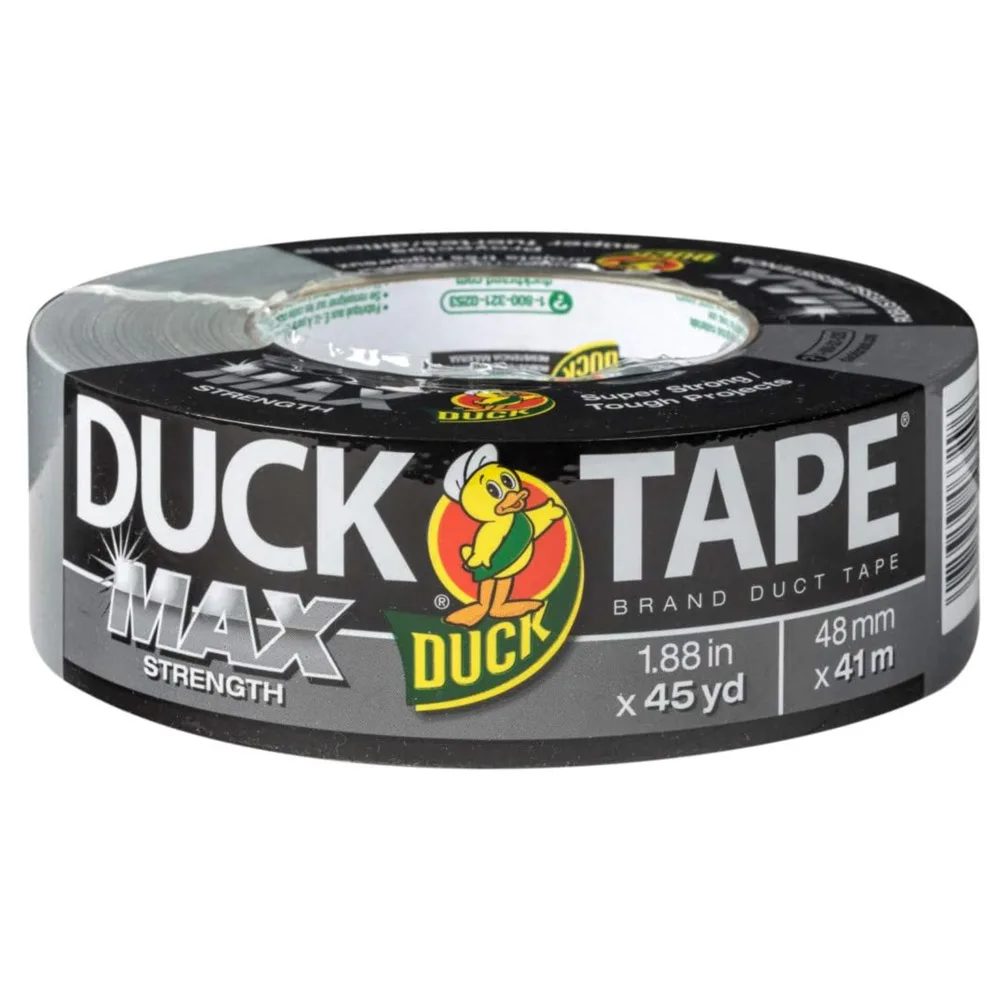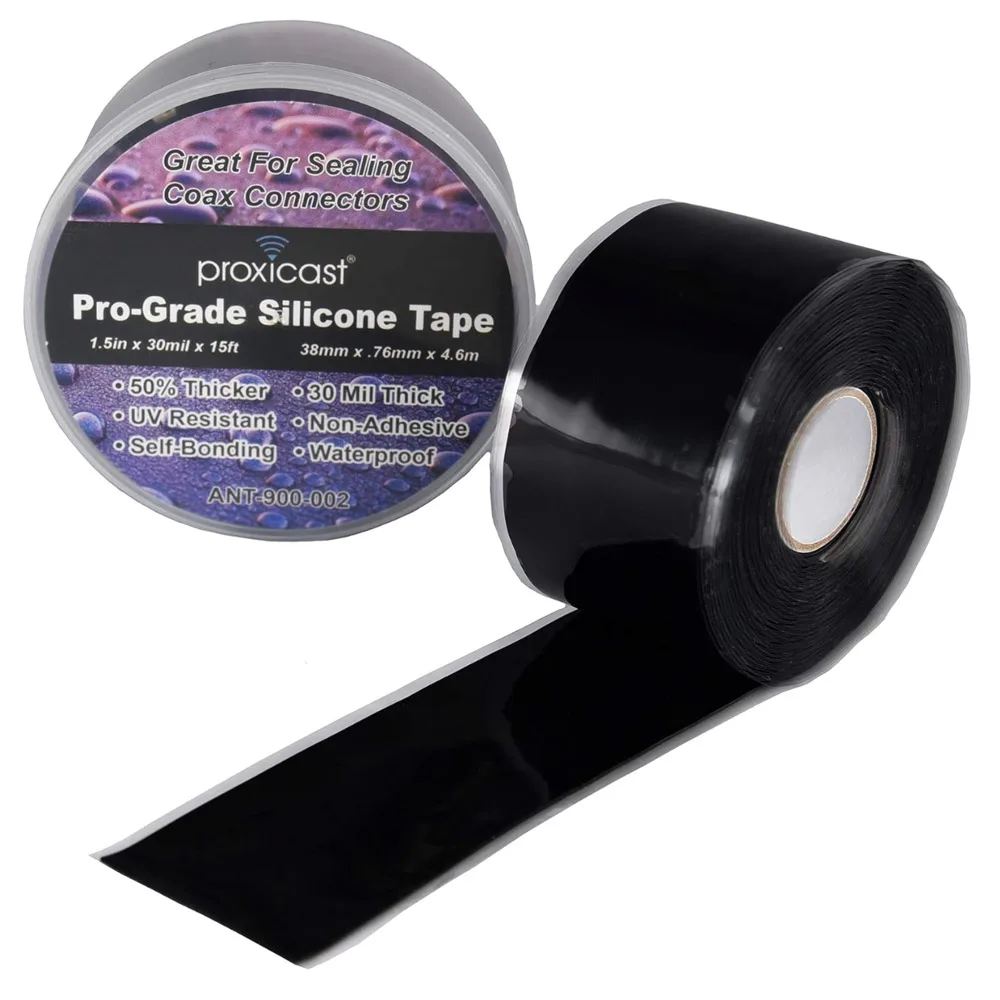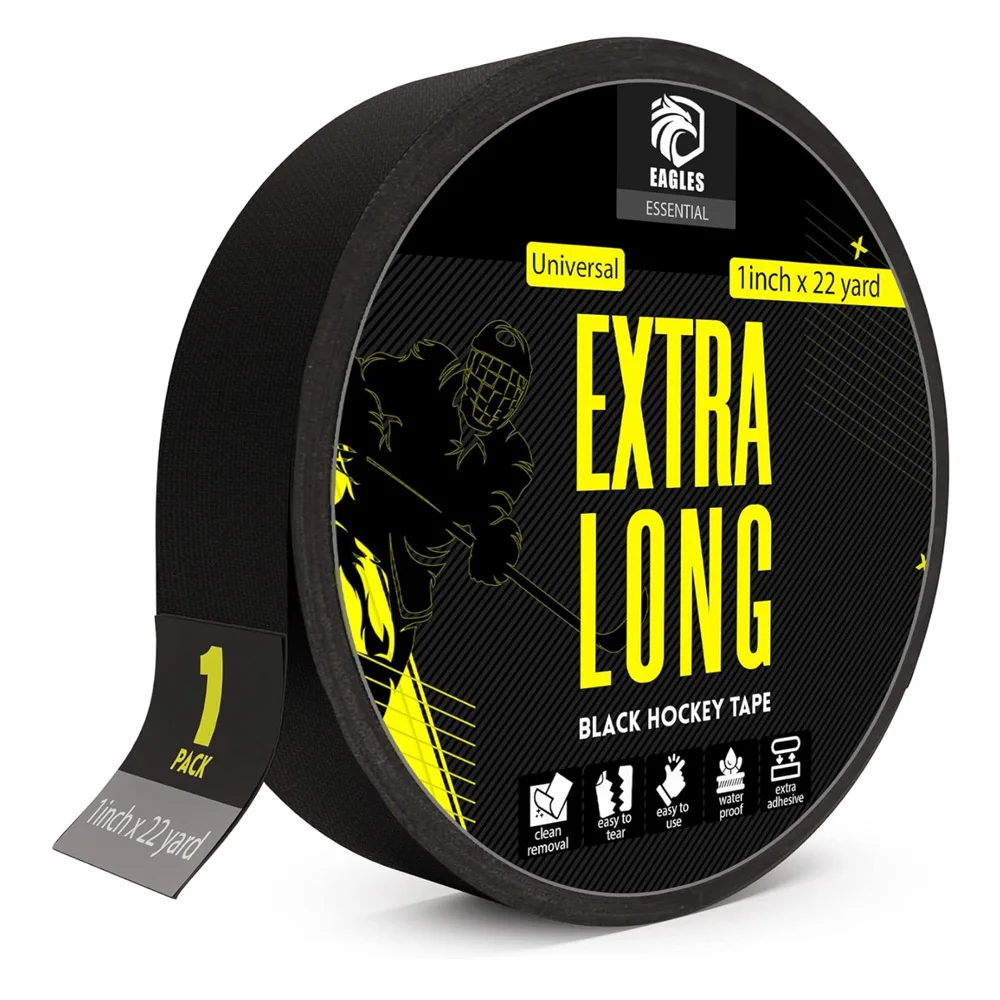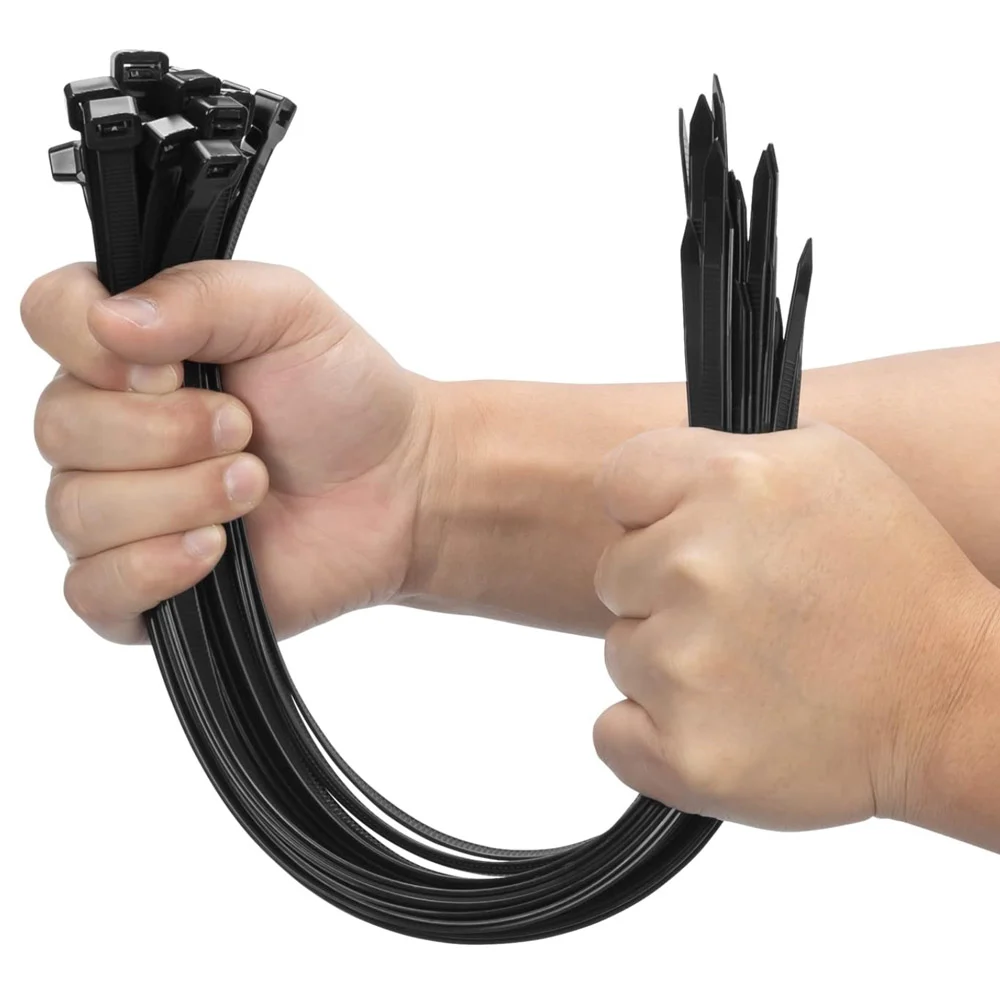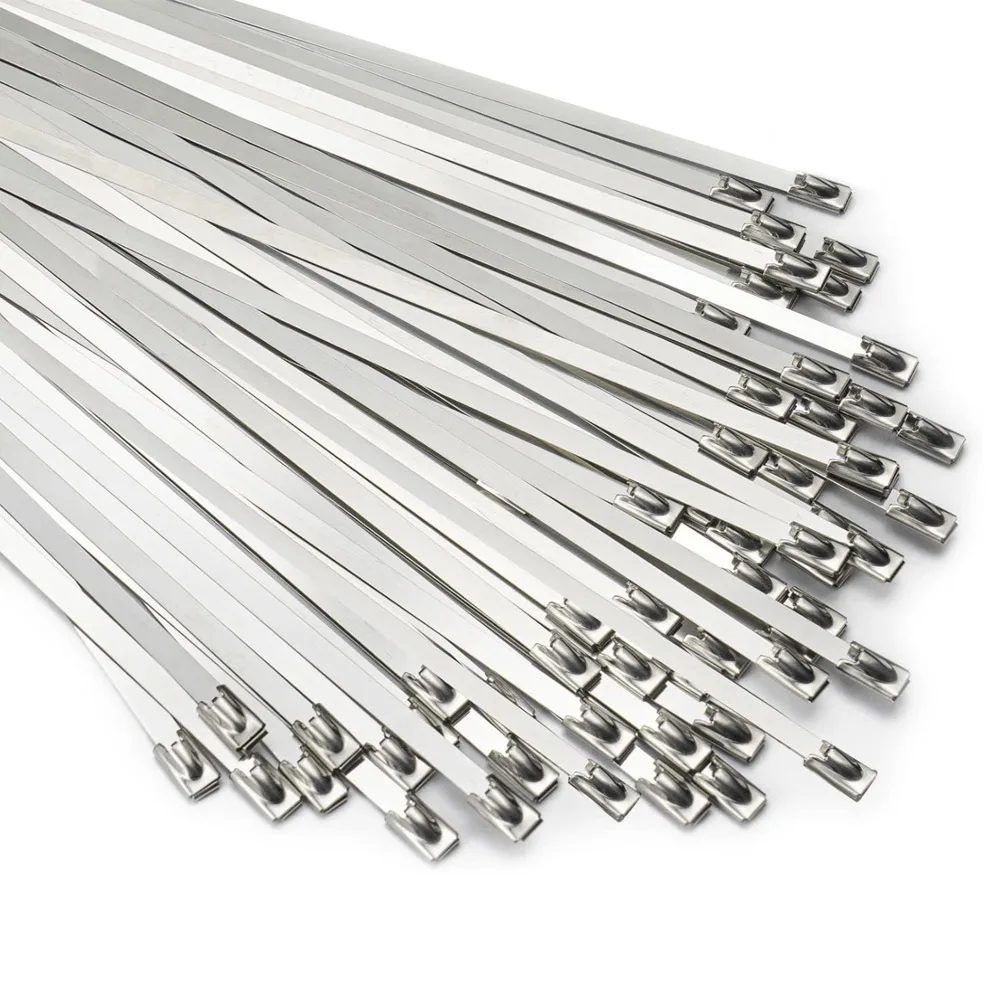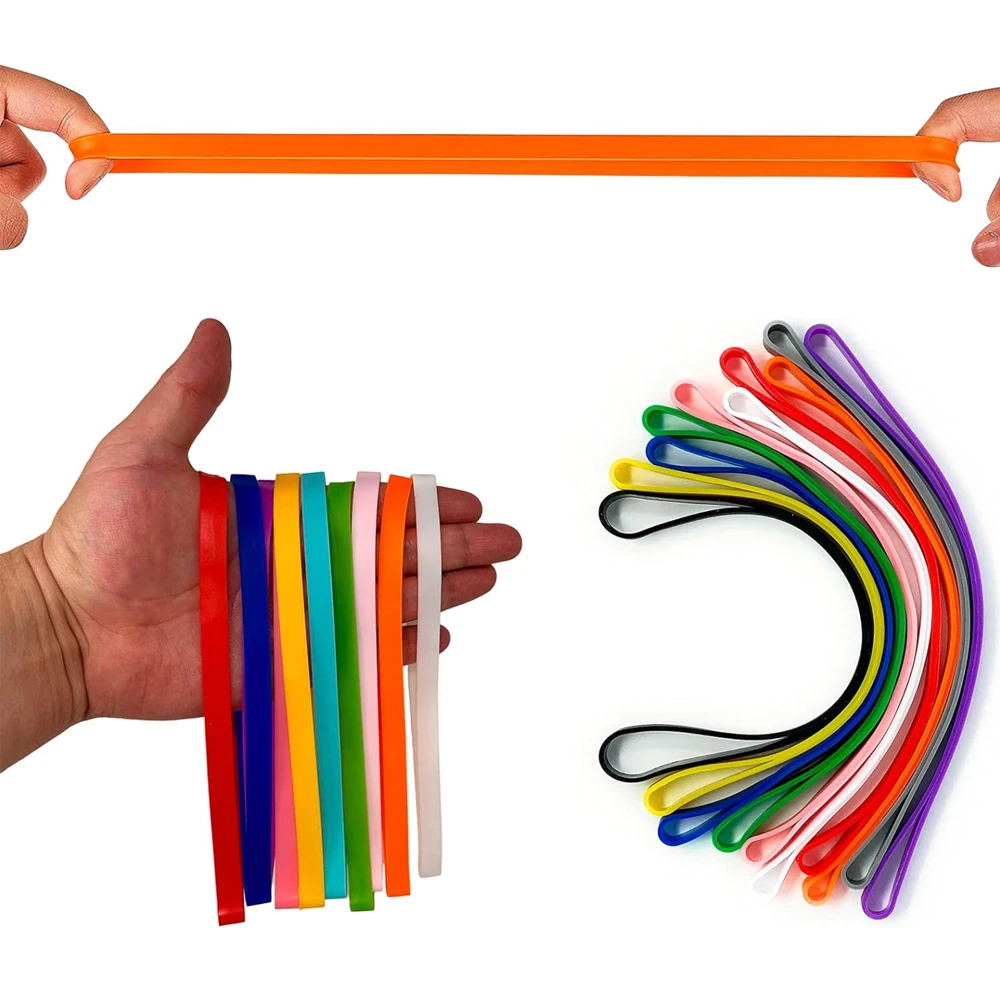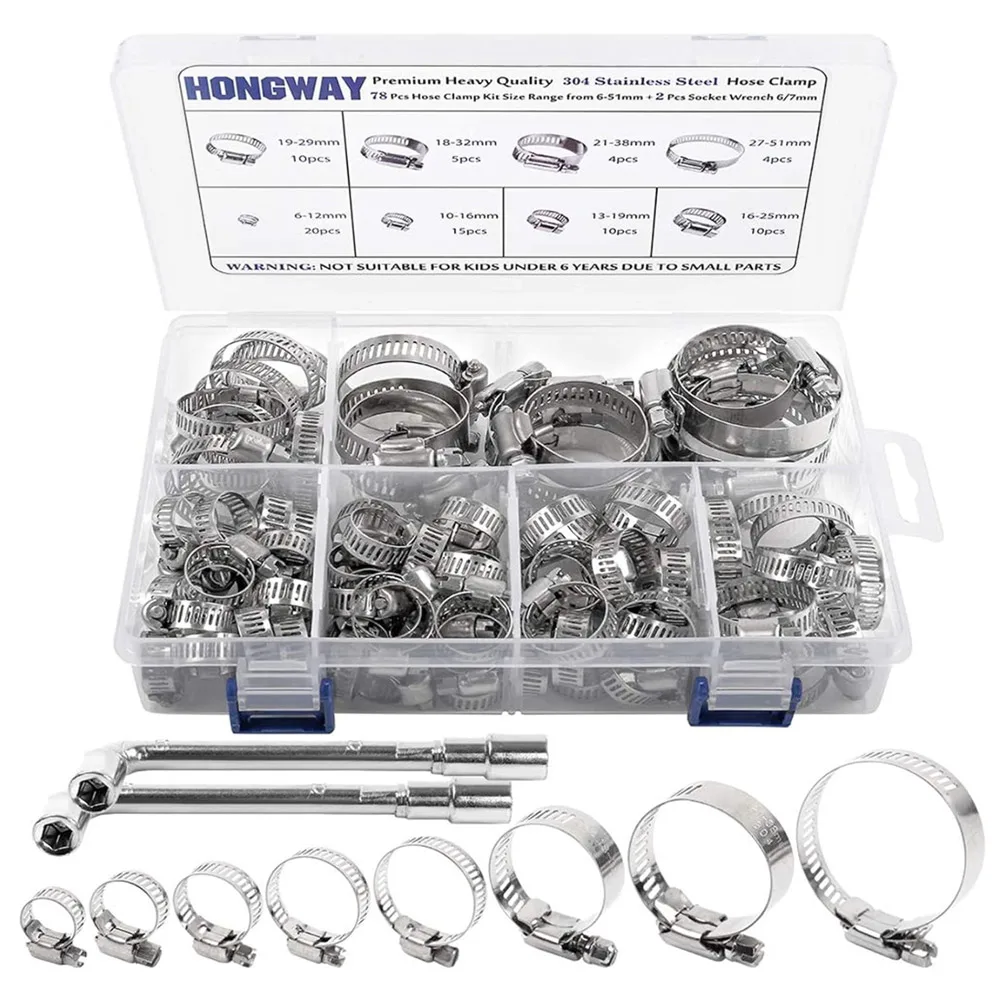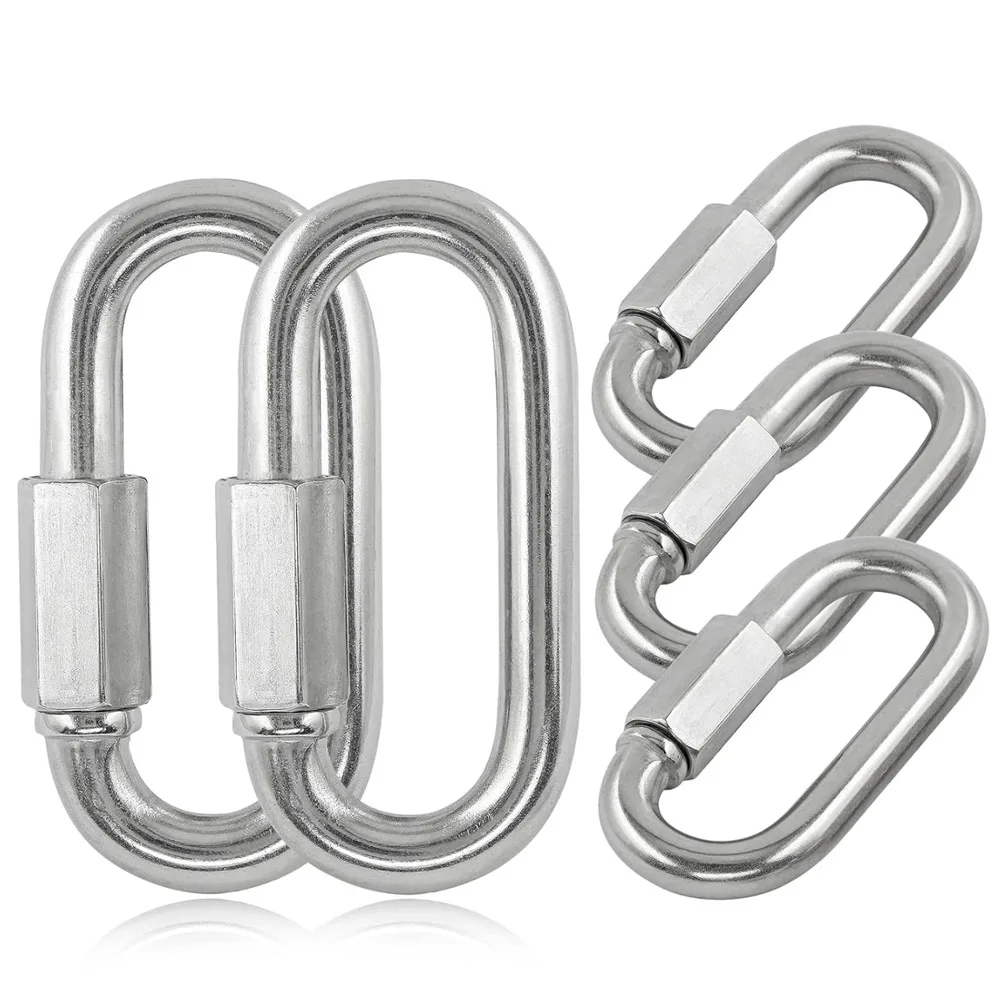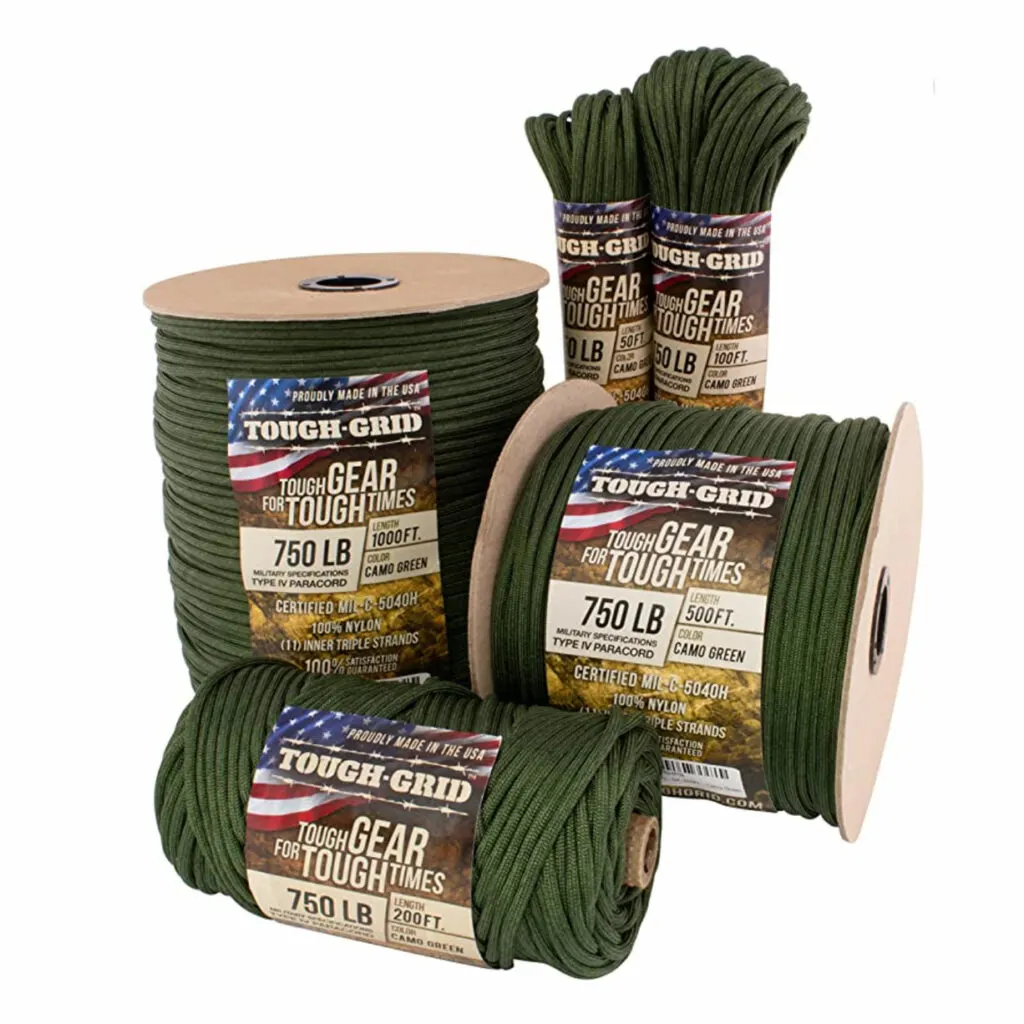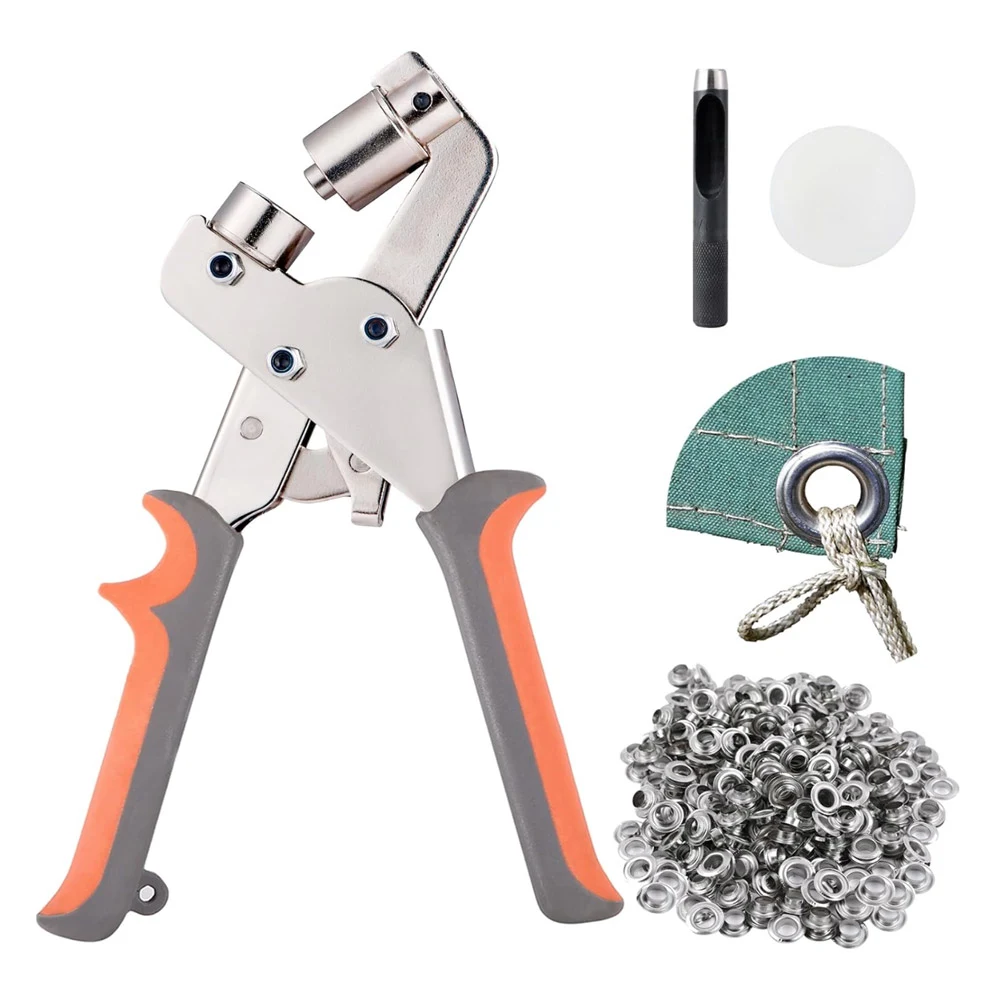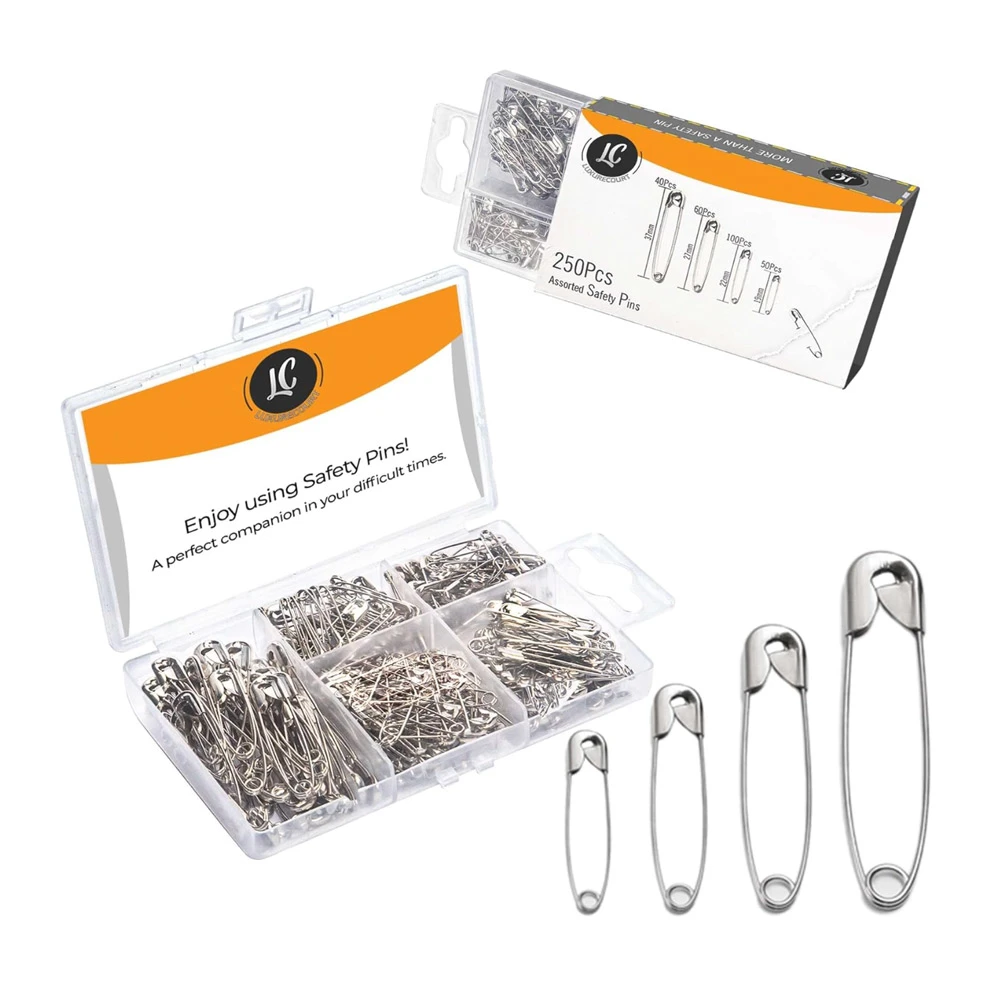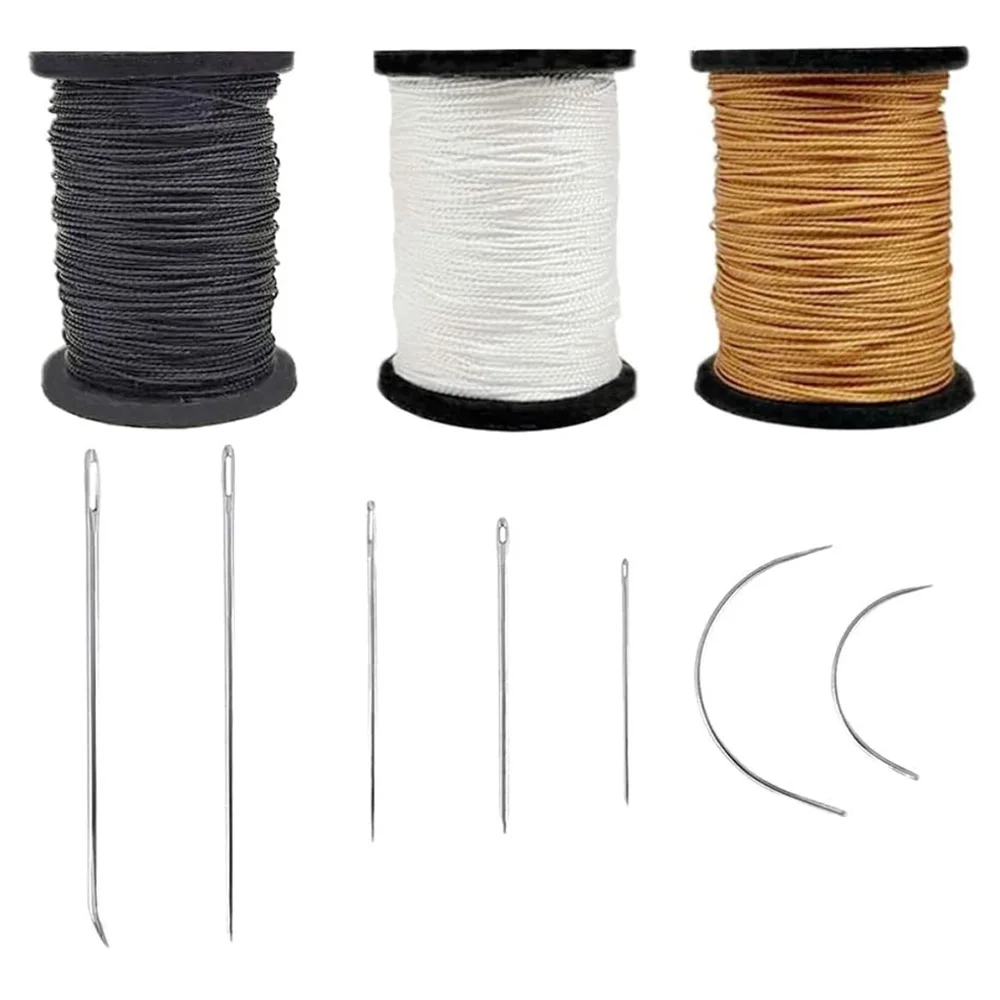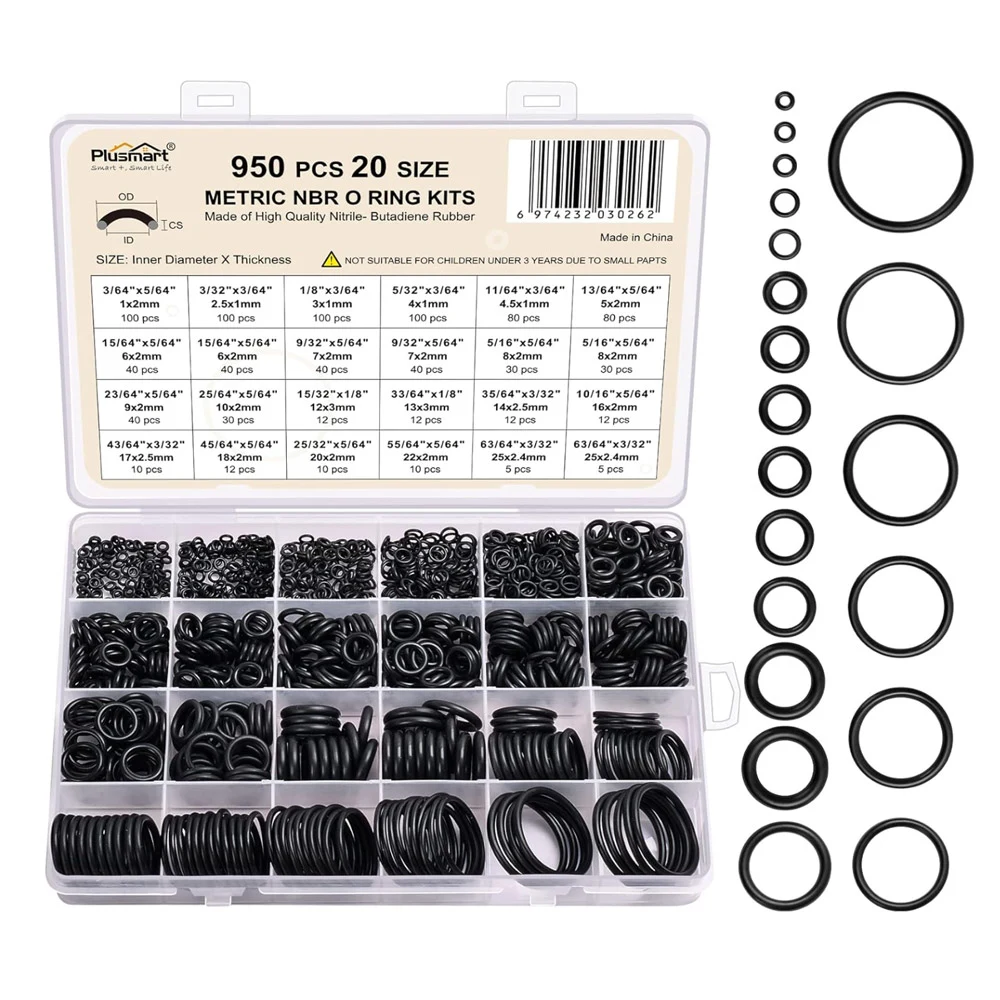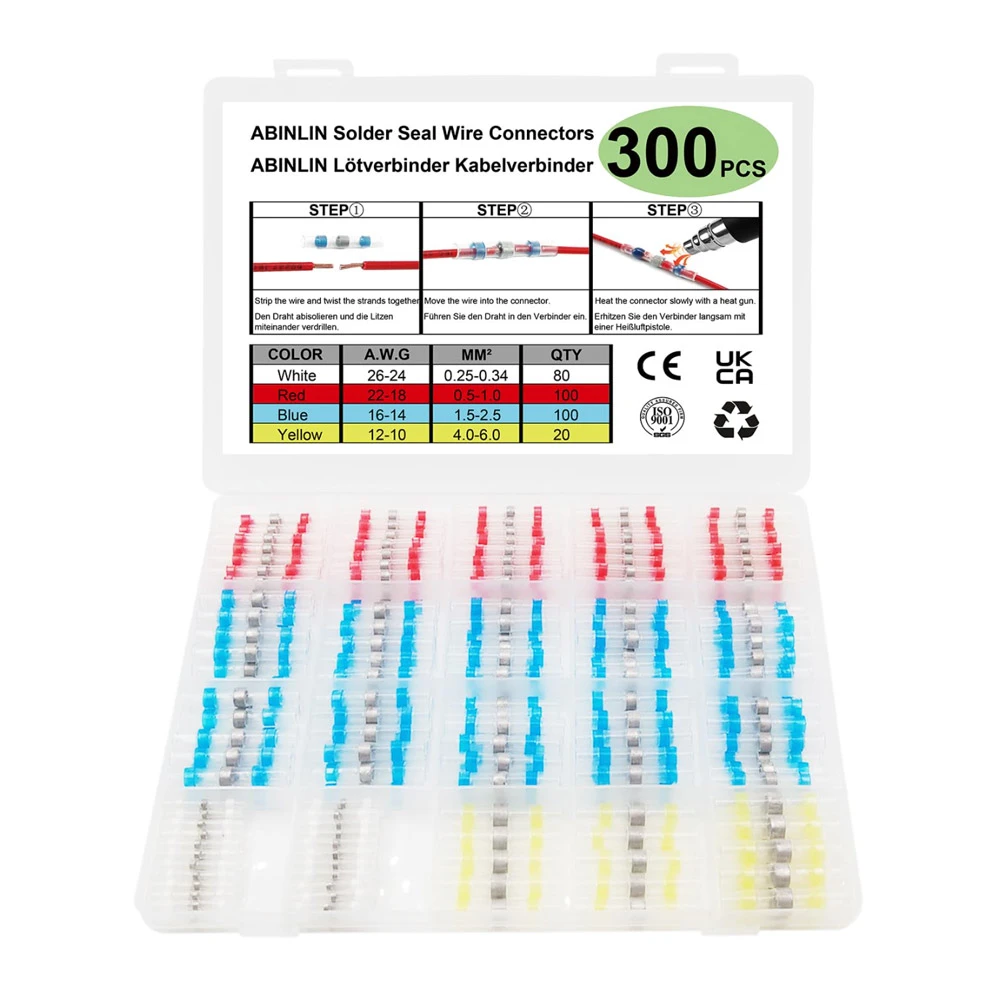The unconventional yet essential fix-all kit for every prepared individual; whether you’re facing an emergency, navigating the challenges of homestead / off grid living, or simply aiming to be ready for anything life throws your way: This kit will provide items needed to fix or repair a lot. While this isn’t really a tool kit, think of it more as a “where to look first when you need a solution to a problem” kit.
This kit does NOT include typical hardware like nails, bolts, or screws. This kit does NOT include solvents or glues either.
In a world where being prepared is not just a choice but a necessity, having the right items available could make all the difference.
We’ve categorized these items into three distinct groups for ease of understanding and application:
1. Essential Tapes for Repairs and Protection
This category encompasses tapes that are indispensable for a range of repair tasks, each offering unique properties for electrical insulation, waterproof sealing, and general repair work.
- Electrical Tape: Crucial for insulating electrical wires and preventing electrical hazards.
- Duct Tape: A multi-use, strong tape for quick fixes, sealing, and repairing a variety of items.
- Self-Fusing Silicone Tape: Excellent for emergency leak repairs, creating a waterproof, airtight seal.
- Hockey Tape: Renowned for its strong adhesive quality and durability, hockey tape is particularly effective for creating non-slip grips on tools, handles, and other equipment.
- Plumber’s Tape (Thread Seal Tape): Key for preventing leaks in threaded pipe connections.
2. Fastening, Securing, and Protective Materials
This category is dedicated to items that are crucial for fastening, securing, and providing protective solutions. It includes a range of materials from simple rubber bands to more robust items like rivet kits, each serving a unique purpose in ensuring stability and protection.
- Zipper Ties (Cable Ties): Versatile for bundling, securing, or repairing a wide range of items.
- Adhesive Velcro Strips: Great for temporary fastenings on fabrics or smooth surfaces.
- Rubber Bands: Handy for securing small items or as improvised tool grips.
- Hose Clamps: Essential for securing hoses or pipes, particularly in plumbing emergencies.
- Chain Links or Quick Links: Useful for quick repairs or creating secure attachments.
- Carabiners: Convenient for quickly attaching or securing gear and tools.
- U-Bolts: Effective for firmly securing pipes, rods, or cables.
- S-Hooks: Ideal for hanging items or organizing tools.
- Paracord: Extremely strong and versatile for tying and securing in various situations.
- Metal Grommet Kit: Essential for reinforcing holes in materials and creating durable anchor points.
- Rivet Kit: Perfect for making permanent repairs on metal or heavy fabrics.
- Felt Pads: Useful for protecting surfaces, dampening sounds, or as makeshift insulators.
- Safety Pins: Versatile fasteners for emergency repairs, makeshift tools, and organizational aid.
- Sewing Thread Kit & Needles: Essential for fabric repairs, customization, and durable fixes in various applications.
3. Plumbing and Electrical Essentials
This category focuses on items specifically useful for plumbing and electrical work. These essentials are key for ensuring leak-proof connections, safe electrical wiring, and general maintenance in these areas.
- Rubber O Ring Set: Vital for sealing and preventing leaks in plumbing and machinery.
- Heat Shrink Tubing: Ideal for insulating wires and connections, providing a waterproof seal.
- Solder Seal Wire Connectors: Perfect for making durable, waterproof electrical connections.
- Wire Nuts: Essential for safely connecting electrical wires.
Suggested products via an affiliate link + a list of uses for each item listed here.
Essential Tapes for Repairs and Protection
Electrical Tape
Typical Use: Electrical tape, a type of pressure-sensitive tape, is primarily used for insulating electrical wires and other materials that conduct electricity. It’s designed to withstand a wide range of temperatures and electrical currents, making it ideal for preventing electrical shorts and maintaining safety in electrical systems.
Non-Conventional and Useful Applications:
- Labeling: Color-coded electrical tape can be used for labeling wires, cables, or even other items around the home or workshop for easy identification.
- Temporary Repairs: It can serve as a quick fix for cracked phone chargers, frayed cords, or even small hoses, providing a temporary solution to prevent further damage.
- Improvised Insulation: In a pinch, electrical tape can be wrapped around windows or doors as a makeshift insulation to reduce drafts.
- Grip Enhancement: Wrapped around tool handles, it can provide a better grip, especially in wet conditions.
- Emergency Bandaging: In survival situations, it can be used as an emergency bandage to hold a dressing in place or to stabilize a sprain.
- Waterproofing: When tightly wrapped, it can waterproof connections or seal small leaks temporarily in various containers.
- Marking Trails: Brightly colored electrical tape can be used to mark trails or paths when hiking or exploring unfamiliar territory.
- Securing Objects: It can be used to secure objects temporarily in place, such as securing a flashlight to a pole or a tent pole repair.
- Mending Fabric: For quick fabric repairs, such as patching up tears in clothing or tents, electrical tape can be a temporary solution.
- Crafting and DIY Projects: It can be used in various crafting projects for both its adhesive properties and its array of colors.
Duct Tape
Typical Use: Duct tape, known for its strength, durability, and adhesive power, is traditionally used for sealing ductwork, performing heavy-duty repairs, and a variety of other tasks where a strong, flexible, and sticky tape is required. Its ability to adhere to a wide range of surfaces and withstand different environmental conditions makes it a go-to for many repair jobs.
Non-Conventional and Useful Applications:
- Emergency Medical Aid: In a pinch, duct tape can be used to secure bandages, splint broken limbs, or even as a makeshift tourniquet in emergency medical situations.
- Waterproofing: It can be used to waterproof shoes, gloves, or other items temporarily, making it invaluable in wet conditions.
- Makeshift Rope: Twisted duct tape can be used as a strong, impromptu rope for binding, towing, or even rescuing.
- Patching Holes: Ideal for patching holes in tents, tarps, or rain gear, providing a quick and effective barrier against moisture and wind.
- Insect Trap: Rolled into a sticky cylinder, it can catch flies and mosquitoes, useful in both outdoor and indoor settings.
- Clothing Repair: It can temporarily fix tears in clothing or outdoor gear, helping to extend their usability.
- Sealing Containers: Duct tape can seal food containers or packages, protecting contents from moisture and pests.
- Improvised Grips: Wrapped around tool handles, it provides a non-slip grip, enhancing safety and efficiency.
- Hanging Tools: Can be used to hang lightweight tools or items temporarily, especially when hooks aren’t available.
- Crafting and Customization: Useful in arts and crafts for creating wallets, bags, or decorative items, thanks to its durability and variety of designs.
- Emergency Signaling: Reflective or brightly colored duct tape can be used to create emergency signals or markers.
- Laptop or Book Binding: It can be used to repair damaged book spines or to provide a protective cover for laptops and other devices.
Self-Fusing Silicone Tape
Typical Use: Self-fusing silicone tape is a versatile, highly adaptable tape known for its ability to create airtight and watertight seals. It’s primarily used for emergency repairs on plumbing leaks, insulating electrical wires, and sealing connections in harsh environments. This tape fuses to itself without any adhesive, making it ideal for creating long-lasting, durable seals.
Non-Conventional and Useful Applications:
- Emergency Hose Repair: Perfect for fixing leaks or breaks in hoses or pipes, especially in plumbing or in garden applications.
- Improvised Insulation: Can be used to insulate or protect items from extreme temperatures, making it useful in both hot and cold environments.
- Protective Wrapping: Wrap around tool handles or other items for added grip and protection against moisture and corrosion.
- Temporary Seal for Containers: Ideal for creating a temporary, watertight seal on containers or jars, especially in outdoor or survival situations.
- Cable and Cord Repair: Can be used to mend frayed cables or cords, protecting them from further damage and preventing electrical hazards.
- Medical Uses: In a survival scenario, it can be used to secure bandages or splints, as it conforms well to the body and provides a secure hold.
- Waterproofing Electrical Connections: Perfect for outdoor or marine environments where electrical connections need protection from water.
- Sporting Equipment Repair: Can be used to repair or reinforce sports equipment like bike handles, fishing rods, or even as grip tape for rackets.
- Automotive Repairs: Useful for temporary fixes on car hoses or wiring, especially in emergency roadside situations.
- Sealing Leaky Windows or Doors: Can be applied around window or door edges to reduce drafts and improve insulation in a pinch.
- Crafting and DIY Projects: Its flexibility and strength make it suitable for various crafting projects where a strong, adaptable material is needed.
Hockey Tape
Typical Use: Hockey tape is traditionally used in sports, particularly in ice hockey, to wrap around the handle of a hockey stick for better grip and control. It is known for its durability, strong adhesive quality, and ability to provide a comfortable, non-slip surface even in cold and wet conditions.
Non-Conventional and Useful Applications:
- Improvised Tool Grips: Wrap around tool handles, such as hammers or wrenches, to improve grip and reduce hand fatigue, especially useful in wet or slippery conditions.
- Temporary Repairs: Can be used for quick fixes on sports equipment, bags, or clothing, providing a durable hold.
- Emergency Bandaging: In a pinch, hockey tape can be used to secure bandages or dressings, especially in outdoor or sports-related injuries.
- Cable and Cord Organization: Useful for bundling and organizing cables and cords, preventing tangling and damage.
- Sealing Small Leaks: Temporarily seal small leaks in hoses or pipes, acting as a stop-gap measure until proper repairs can be made.
- Marking and Labeling: Use different colored hockey tape for marking gear, tools, or even pathways for easy identification.
- Binding and Securing Items: Handy for binding loose items together, such as tent poles or camping gear, for easy transport and storage.
- Protective Wrapping: Wrap around vulnerable areas of items to protect against scratches, dings, or moisture.
- Improvised Straps or Ties: Can be twisted or braided to create strong, makeshift straps or ties for a variety of purposes.
- Friction Enhancement: Apply to surfaces where increased friction is needed, such as slippery steps or handles.
- Crafting and DIY Projects: Its strength and adhesive quality make it suitable for various crafting and DIY projects where a strong, flexible tape is needed.
Plumber’s Tape (Thread Seal Tape)
Typical Use: Plumber’s tape, also known as thread seal tape or Teflon tape, is commonly used in plumbing to seal pipe threads and prevent leaks. It’s wrapped around the threads of pipes before they are screwed together, ensuring a watertight and airtight seal. This tape is essential for maintaining the integrity of plumbing connections.
Non-Conventional and Useful Applications:
- Preventing Screws and Bolts from Loosening: Wrap around screws or bolts before tightening to help prevent them from loosening over time, especially in vibrating environments.
- Lubricating Threads: Can be used to lubricate threads on bolts or screws, making them easier to screw in and out, which is particularly useful in rust-prone environments.
- Temporary Repair for Leaky Hoses: Wrap around a leaky hose or pipe as a temporary fix to reduce or stop leakage.
- Sealing Threaded Connections in Gas Lines: Besides water pipes, it’s also effective in sealing connections in gas lines, preventing gas leaks.
- Silencing Squeaky Faucets: Wrap around the base of a squeaky faucet handle to reduce noise and improve movement.
- Improvised Gasket Creation: In an emergency, it can be used to create a makeshift gasket for various types of connections.
- Protecting Delicate Surfaces: Wrap around the edges of tools or objects to protect delicate surfaces from scratches.
Fastening, Securing, and Protective Materials
Zipper Ties (Cable Ties)
Typical Use: Zipper ties, commonly known as cable ties, are widely used for bundling and securing cables, wires, and other objects. They are popular in various industries due to their ease of use and strong hold. Once tightened, they lock in place, making them ideal for organizing cables and ensuring neatness and safety in electrical setups.
Non-Conventional and Useful Applications:
- Emergency Repairs: Quickly repair broken gear, such as backpack straps or tent poles, holding them together until a more permanent fix can be made.
- Makeshift Splints: In a medical emergency, use to secure splints to stabilize broken limbs or injuries.
- Securing Shelter: Fasten branches, tarps, or other materials together when constructing emergency shelters.
- Trap and Snare Making: Useful for constructing traps or snares when trying to catch food in a survival situation.
- Gear Organization: Keep gear bundled and organized, preventing loss and ensuring easy access when needed.
- Temporary Locks: Use as a temporary lock for bags or doors, providing a basic level of security.
- Hanging Tools and Supplies: Create loops to hang tools, cookware, or clothes, especially useful in camping or survival scenarios.
- Fishing Line Repair: Repair or extend a broken fishing line, enabling continued use for catching food.
- Boot or Clothing Fixes: Temporarily repair broken zippers or fastenings on boots and clothing.
- Garden Plant Support: In a homestead setting, use to support plants or vines without damaging them.
- Vehicle Repairs: Secure loose automotive parts temporarily in case of vehicle breakdowns.
Adhesive Velcro Strips
Typical Use: Adhesive Velcro strips are commonly used for attaching and securing items where a temporary and adjustable bond is desired. They consist of two strips: one with tiny hooks and the other with a softer loop surface. When pressed together, they adhere firmly, making them ideal for applications where frequent removal or adjustment is needed, such as in clothing, footwear, and lightweight home decorations.
Non-Conventional and Useful Applications:
- Securing Gear and Equipment: Attach gear to backpacks or belts for easy access, especially useful in hiking or tactical situations.
- Improvised Shelter Building: Use to fasten tarps or other materials together when constructing temporary shelters, allowing for easy assembly and disassembly.
- Emergency Clothing Repairs: Quickly fix tears or replace broken fasteners in clothing or footwear to maintain warmth and protection.
- Mounting Tools and Supplies: Secure essential tools or supplies inside a tent, vehicle, or to a backpack for quick and organized access.
- Temporary First Aid Uses: Secure bandages or splints in emergency medical situations, especially when traditional medical supplies are not available.
- Quick Fixes for Broken Equipment: Repair straps, backpacks, or other gear temporarily, allowing continued use until permanent repairs can be made.
- Vehicle Organization and Repairs: Keep essential survival items secured in a vehicle, or use as a temporary fix for loose automotive components.
- Securing Camouflage or Shelter Materials: Attach camouflage materials to shelters or clothing in wilderness settings for enhanced concealment.
- Waterproofing and Insulation: Create a seal around openings in shelters or clothing for added waterproofing and insulation.
- Sleeping Bag and Mattress Attachment: Keep sleeping bags and mattresses in place, preventing them from sliding or separating during the night.
- Improvised Weapon and Tool Handles: Enhance grip or create makeshift handles for tools and weapons for better usability.
- Securing Solar Panels or Equipment: Attach small solar panels or other equipment to backpacks or shelters for charging or operational purposes.
Rubber Bands
Typical Use: Rubber bands are commonly used for bundling or holding together various items due to their elasticity and flexibility. They are a staple in offices and homes for organizing small items like pens, papers, or other loose objects.
Survival and Highly Useful Applications:
- Improvised Grips: Wrap around tool handles to create a non-slip grip, enhancing safety and usability in challenging conditions.
- Tourniquet in Medical Emergencies: In a critical situation, a rubber band can be used as an improvised tourniquet to control bleeding.
- Securing Shelter Components: Use to hold together components of a makeshift shelter or to secure camouflage materials in place.
- Bundling Survival Gear: Keep survival gear, such as fire-starting kits or fishing gear, bundled and organized for quick access.
- Silent Arrow Retrieval: Wrap around the quiver to prevent arrows from rattling, useful in hunting or stealth situations.
- Waterproofing with Plastic Bags: Secure plastic bags around items for makeshift waterproofing.
- Emergency Snares: Can be used as part of a snare trap for catching small game in a survival scenario.
- Jar and Bottle Openers: Wrapped around stubborn lids, they can provide extra grip to open jars or bottles.
- Clothing and Gear Repair: Temporarily fix torn clothing or gear, holding pieces together until they can be properly repaired.
- Hair Ties: In a pinch, can be used as hair ties to keep hair out of the face, which is crucial in many survival tasks.
- Muzzleloader Shooting Aid: Used to secure patches in muzzleloader shooting for a consistent load.
- Attaching Items to Backpacks: Secure small items to the outside of backpacks for easy access.
Hose Clamps
Typical Use: Hose clamps are commonly used to secure hoses in plumbing systems, ensuring a tight seal between the hose and a nipple or barb. They are essential in preventing leaks in various types of hoses, such as those used in automotive cooling systems, home plumbing, and garden hoses.
Survival and Highly Useful Applications:
- Emergency Plumbing Repairs: Quickly fix burst or leaking pipes in a survival situation to prevent water loss or damage.
- Makeshift Gasket Creation: In the absence of a proper gasket, a hose clamp can be used to secure a makeshift gasket in place, preventing leaks in machinery or plumbing.
- Securing Shelter Components: Use to fasten together parts of a makeshift shelter or to secure tarps and coverings in place.
- Improvised Medical Tool: In a medical emergency, a hose clamp can be used as a clamping tool to control bleeding or to secure a splint.
- Vehicle Repairs: Temporarily repair damaged vehicle hoses or secure loose parts under the hood during emergency automotive repairs.
- Tool and Gear Repair: Fix broken handles or parts of tools and gear, allowing continued use until a more permanent repair can be made.
- Securing Loads: Use to secure items onto a backpack, vehicle, or makeshift sled, ensuring they don’t shift or fall during transport.
- Garden Hose Repair: Repair a punctured or torn garden hose to maintain a water supply for irrigation in homesteading situations.
- Attaching Items to Bikes or Motorcycles: Secure extra gear or emergency supplies to bikes or motorcycles when on the move.
- Reinforcing Broken Equipment: Strengthen or reinforce broken equipment such as tent poles, fishing rods, or cooking utensils.
- Creating Hanging Points: Attach hose clamps to poles or branches to create hanging points for lanterns, pots, or tools.
- Securing Makeshift Weapons or Tools: Secure blades, arrowheads, or other sharp objects to sticks or handles to create makeshift tools or weapons.
Chain Links or Quick Links
Typical Use: Chain links or quick links are primarily used to connect segments of chains or to attach chains to other components. They are known for their strength and reliability, commonly used in situations where a secure, load-bearing connection is needed, such as in lifting, towing, or securing heavy items.
Survival and Highly Useful Applications:
- Securing Gear and Supplies: Use to securely attach gear, supplies, or tools to backpacks, belts, or vehicles, ensuring they stay in place during transport or movement.
- Emergency Shelter Construction: Employ them to connect ropes or cables when building shelters, providing a strong and reliable anchor point.
- Makeshift Repair for Equipment: In the absence of proper repair tools, quick links can be used to temporarily fix broken equipment, such as backpack straps or tent frames.
- Creating Snares or Traps: Useful in survival situations for creating snares or traps to catch small game or fish.
- Hanging Cooking Utensils or Food: Hang cooking utensils, pots, or even food away from the ground to protect from wildlife and for easy access.
- Improvised Climbing Aids: Can be used as a makeshift solution for securing climbing ropes or creating anchor points in an emergency.
- Vehicle Recovery and Towing: Handy in emergency vehicle recovery situations, such as towing or securing loads on a vehicle.
- Securing Tarps or Covers: Attach tarps or covers to shelters, vehicles, or other structures for protection against the elements.
- Binding and Securing Loads: Use to bind and secure loads, preventing shifting or loss of items, especially in transit or when on foot.
- Attaching Tools to Belts: Secure tools to belts or tool vests for quick and easy access during work or in survival scenarios.
- Emergency Animal Restraints: In a pinch, they can be used to create restraints for animals, either for safety or transport.
Carabiners
Typical Use: Carabiners are widely used in climbing and mountaineering for securing ropes and gear. They are metal loops with a spring-loaded gate that can quickly and securely attach components together. Their strength and ease of use make them essential in situations where safety and quick access are paramount.
Survival and Highly Useful Applications:
- Securing Gear: Attach gear to backpacks, belts, or harnesses for easy access, especially useful in hiking, climbing, or tactical situations.
- Emergency Shelter Building: Use to quickly connect tarps, ropes, or nets when constructing temporary shelters, providing a secure and adjustable setup.
- Makeshift Pulley System: Employ in creating a makeshift pulley system for lifting or moving heavy objects, which can be crucial in rescue operations or building shelters.
- Hanging Food and Supplies: Hang food bags from trees to keep them away from wildlife, or use to organize and hang supplies in a campsite.
- Temporary Repairs: Useful for temporary repairs on backpacks, clothing, or equipment, especially when traditional fastening methods fail.
- Water Bottle Holder: Attach water bottles to backpacks or belts for easy carrying and access.
- Attaching Items to Vehicles: Secure items to the outside of a vehicle, such as extra fuel cans or gear bags, especially in off-road or overlanding adventures.
- Safety Line Attachment: In risky terrain, use to attach a safety line to yourself or others for added security.
- Tool Organizer: Keep tools organized and accessible by attaching them to a belt or overhead bar in a workspace.
- Keychain or Multi-Tool Holder: Keep keys, multi-tools, or small essential items easily accessible.
- Animal Leash or Restraint: In a pinch, can be used as part of an animal leash or to secure pets during transport.
U-Bolts
Typical Use: U-bolts are metal bolts in the shape of the letter U with screw threads on both ends. Traditionally, they are used to support pipework, where the pipe passes through the open space in the bolt, and are secured with nuts. They are also commonly used in automotive applications for attaching parts to vehicles, particularly in the suspension system.
Survival and Highly Useful Applications:
- Securing Heavy Loads: Use U-bolts to securely fasten heavy or bulky items to vehicles, trailers, or racks, ensuring they stay in place during transport.
- Makeshift Repair for Vehicles: In emergency situations, they can be used for temporary repairs on vehicle exhaust systems, suspensions, or to secure loose automotive parts.
- Anchoring Shelters or Structures: Employ U-bolts to anchor temporary shelters, tents, or tarps to the ground or to secure structural components together.
- Mounting Equipment: Ideal for mounting tools, gear, or equipment to walls, workbenches, or vehicles, especially in a mobile or field setting.
- Creating Custom Clamps: Combine with a small piece of pipe or wood to create a custom clamp for holding objects together while glue dries or for other repair work.
- Attaching Pulley Systems: Useful in setting up pulley systems for lifting or moving heavy objects, a common need in survival scenarios.
- Securing Boat or Marine Equipment: Secure equipment or accessories to boats or docks, useful in aquatic survival situations.
- Hanging Items for Storage: Hang tools, gear, or food supplies from rafters or overhead beams to save space and protect from ground moisture or animals.
- Garden and Homestead Use: Secure fencing, gates, or garden tools in a homestead environment.
- Emergency Animal Restraints: Can be used to create restraints or leads for livestock or pets in emergency situations.
- Reinforcing Makeshift Structures: Strengthen joints and connections in makeshift structures or repairs.
- Attaching Gear to Packs: Secure additional gear or external items to backpacks or packs for extended trips or expeditions.
S-Hooks
Typical Use: S-Hooks are simple but versatile hooks shaped like the letter ‘S’. They are commonly used for hanging items, connecting chains, and attaching accessories in various settings, including kitchens, workshops, and retail displays. Their ease of use and ability to quickly connect and disconnect items make them a popular choice for organizing and displaying objects.
Survival and Highly Useful Applications:
- Hanging Cooking Utensils and Gear: Use S-Hooks to hang cooking utensils, pots, or other gear over a campfire or within a campsite for easy access and organization.
- Securing Tarps or Shelters: Attach tarps or other shelter materials to ropes or branches, providing a quick and adjustable method for setting up emergency shelters.
- Organizing Equipment: Keep survival gear, tools, or food supplies organized and off the ground, protecting them from moisture, dirt, and animals.
- Drying Clothes or Gear: Hang clothes, boots, or gear for drying, especially useful in damp environments or after river crossings.
- Fishing Applications: Can be used in makeshift fishing setups, such as hanging nets or lines.
- Vehicle Repairs and Organization: Secure items under the hood of a vehicle or organize gear in the trunk or roof rack.
- Improvised Grappling Hook: Combine with rope for an improvised grappling hook for climbing or retrieving items.
- Garden and Homestead Use: Hang tools, plants, or lanterns in a garden or homestead setting.
- Attaching Items to Backpacks: Quickly attach additional gear or items to the outside of a backpack for easy carrying.
- Emergency Animal Restraints: Use as a temporary solution for restraining or leading animals.
- Building Makeshift Ladders or Structures: Employ in constructing simple ladders or frameworks by connecting rods or branches.
- Securing Boats or Watercraft: Attach gear to boats or docks, or secure watercraft to prevent drifting.
Paracord
Typical Use: Paracord, short for parachute cord, is a lightweight nylon rope originally used in the suspension lines of parachutes. It is known for its high tensile strength, durability, and flexibility. In everyday use, it’s popular for crafting, such as in making bracelets, belts, and other decorative items. Its strength and versatility make it a staple in camping and outdoor activities.
Survival and Highly Useful Applications:
- Building Shelters: Use paracord to tie down and secure tarps, tents, or branches when constructing shelters.
- Emergency Medical Use: In a pinch, it can be used as a tourniquet or to secure splints and bandages.
- Making Fire Starters: Unravel the inner strands to use as tinder for starting fires.
- Repairing Gear: Replace broken straps on backpacks or shoelaces, or mend other gear temporarily.
- Fishing Line: Inner strands can be used as fishing line in survival situations.
- Securing Loads: Tie down or secure gear to backpacks, vehicles, or makeshift sleds.
- Climbing and Rappelling: While not a substitute for a proper climbing rope, it can be used for short, light climbs or to lower gear.
- Creating Snares and Traps: Useful for catching small game in the wild.
- Crafting Emergency Tools: Braid or twist paracord to create stronger ropes or makeshift tools.
- Signaling for Help: Brightly colored paracord can be used to signal for help in rescue situations.
- Binding and Splinting: In first aid, use to bind splints or immobilize injured limbs.
- Dental Floss: The inner strands can be used as emergency dental floss.
Metal Grommet Kit
Typical Use: A metal grommet kit is typically used to reinforce holes in fabric, leather, or other materials, preventing tearing and wear. Grommets, which are small metal rings, are commonly used in tarps, tents, curtains, and various types of apparel, providing a durable edge for a hole through which cords, ropes, or fasteners can pass.
Survival and Highly Useful Applications:
- Reinforcing Shelter Materials: Strengthen holes in tarps, tents, or other shelter materials to prevent tearing, especially important in creating or repairing long-lasting shelters.
- Making Custom Tarps or Covers: Create custom tarps or covers with reinforced holes for ropes or ties, useful in protecting gear or creating privacy screens.
- Improvised Fishing Gear: Use grommets to reinforce holes in homemade fishing nets or lines.
- Securing Camouflage: Attach grommets to camouflage materials for easy setup and secure attachment in concealment applications.
- Emergency Clothing Repair: Repair or reinforce holes in belts, backpacks, or clothing where cords or straps may pass through.
- Creating Hanging Storage: Install grommets in cloth or leather to create hanging storage solutions, optimizing space in small shelters.
- Water Collection Systems: Use in creating or repairing water collection systems, like tarps or sheets, ensuring durability and effectiveness.
- Signaling Devices: Attach reflective materials or flags to grommets for use as signaling devices in rescue situations.
- Tool and Gear Customization: Modify gear and tools to attach additional components or for better organization.
- Wind Chimes or Noise Makers: Create wind chimes or noise-making devices for deterring wildlife or as distress signals.
- Garden Applications: Reinforce garden cloths, shades, or protective covers with grommets for secure fastening.
- Crafting Makeshift Belts or Straps: Reinforce holes in makeshift belts or straps for carrying gear or bundling items.
Rivet Kit
Typical Use: A rivet kit is commonly used in both industrial and DIY contexts for joining two pieces of metal, plastic, or other materials together in a permanent fashion. Rivets are a type of fastener that, once installed, are extremely strong and reliable. They are often used in situations where welding is not possible or practical, such as in sheet metal work, aircraft manufacturing, and automotive applications.
Survival and Highly Useful Applications:
- Permanent Gear Repairs: Use rivets to make durable repairs on metal gear, containers, or tools that are subject to heavy use or stress.
- Constructing and Repairing Shelters: Employ rivets to join or reinforce materials in shelter construction, ensuring stability and durability.
- Reinforcing Makeshift Tools or Weapons: Strengthen the construction of improvised tools or weapons, ensuring they withstand use.
- Vehicle and Machinery Repairs: In a survival scenario, use rivets to perform lasting repairs on vehicles, machinery, or other equipment where welding is not an option.
- Securing Metal Plates or Patches: Attach metal plates or patches to damaged areas in equipment, containers, or structures for a long-lasting fix.
- Creating Custom Storage Solutions: Build or modify storage units, racks, or containers, using rivets for a strong and lasting construction.
- Reinforcing Footwear or Clothing: Apply rivets to reinforce high-stress areas in boots, belts, or heavy-duty clothing.
- Attaching Handles or Straps: Securely attach handles or straps to heavy-duty gear or containers for easier transport.
- Building Traps or Snares: Use in the construction of metal traps or snares for hunting or defense.
- Repairing Metal Fencing or Barriers: Fix or reinforce metal fencing or barriers, crucial in maintaining perimeter security.
- Crafting Makeshift Cookware or Utensils: Assemble or repair metal cookware, utensils, or grills, essential in food preparation.
- Securing Solar Panels or Equipment: Rivet solar panels or other essential equipment to a stable surface for secure and permanent installation.
Felt Pads
Typical Use: Felt pads are commonly used in homes to protect floors from scratches and damage caused by furniture. They are typically placed under the legs of chairs, tables, and other heavy furniture. Their soft texture allows for smooth movement across surfaces without leaving marks or scratches.
Survival and Highly Useful Applications:
- Noise Reduction: Attach to the bottoms of gear or tools to minimize noise when moving in stealth situations, such as during hunting or when avoiding detection.
- Insulation: Use as insulators to prevent heat loss in makeshift shelters or to insulate containers holding hot or cold items.
- Protective Wrapping: Wrap around delicate items or tools to protect them from damage during transport or storage.
- Improvised Gaskets: Cut to size and use as makeshift gaskets in machinery or equipment to prevent leaks or dampen vibrations.
- Cushioning for Medical Use: Provide cushioning or protection for injured areas, especially when creating splints or bandages.
- Grip Enhancement: Attach to handles of tools or equipment for improved grip and comfort, especially in cold or wet conditions.
- Arrow or Dart Fletching: Cut into strips and use as makeshift fletching for arrows or darts in hunting or defense situations.
- Lens or Screen Protectors: Use to protect lenses, screens, or other sensitive surfaces from scratches and dirt.
- Sealing Cracks or Gaps: Fill small cracks or gaps in shelters or equipment to prevent drafts, water ingress, or insect entry.
- Polishing or Cleaning Tool: Use as a soft pad for polishing metal, glass, or other surfaces, or for applying oils and cleaning solutions.
- Muffling Sound of Tools or Weapons: Attach to tools or weapons to muffle sounds during use, reducing noise in sensitive situations.
Safety Pins
Typical Use: Safety pins are a common household item known for their versatility. They are primarily used for fastening pieces of fabric or clothing together, but their utility extends far beyond simple garment repairs. Their design allows for quick and secure fastening, making them a staple in sewing, fashion, and everyday emergency kits.
Survival and Highly Useful Applications:
- Emergency Clothing Repairs: Quickly fix tears or replace lost buttons on clothing.
- Makeshift Medical Tool: Use as an improvised suture needle or to secure bandages and slings in first aid situations.
- Gear and Equipment Fix: Temporarily repair torn backpacks, tents, or other gear.
- Fishing Hook: Bend into a hook for an emergency fishing tool.
- Securing Items: Pin together keys, notes, or other small items to keep them organized.
- Lock Picking: Can be used as a makeshift tool for picking simple locks in emergency situations.
- Zipper Pull Replacement: Replace a broken zipper pull on clothing or gear.
- Trail Marking: Attach brightly colored fabric or materials to trees or bushes to mark a trail.
- DIY Jewelry Clasp: Create a makeshift clasp for necklaces or bracelets.
- Securing Bandanas or Headgear: Keep headwear securely in place, especially in windy conditions.
Sewing Thread Kit & Needles
Typical Use: A sewing thread kit and needles are essential tools for any sewing project, whether it’s for making, mending, or altering clothing and other fabric items. They are fundamental in tailoring, dressmaking, quilting, and various other textile arts. The versatility of different thread types and needle sizes makes them indispensable for detailed fabric work.
Survival and Highly Useful Applications:
- Clothing Repair and Alteration: Mend tears, sew buttons, and adjust the fit of garments.
- Gear Modification: Customize or repair backpacks, pouches, and other fabric gear.
- Tent and Tarp Repair: Fix rips or tears in tents, tarps, or sleeping bags.
- First Aid Stitches: In extreme cases, use needle and thread for emergency sutures.
- Crafting Fishing Nets: Create or mend fishing nets for food gathering.
- Shoe Repair: Mend or reinforce parts of shoes or boots.
- Makeshift Straps or Belts: Sew fabric to create or repair straps and belts.
- Upholstery Repair: Fix torn seats or covers in vehicles or furniture.
- Creating Pouches or Bags: Sew fabric to make custom pouches or bags for storage and organization.
- Insulation Enhancements: Add extra layers to clothing or sleeping gear for warmth.
- Decorative Patches: Use for attaching patches to clothing or gear for identification or personalization.
- Emergency Dental Floss: Use thread as a substitute for dental floss in hygiene routines.
Rubber O Ring Set
Typical Use: Rubber O rings are commonly used as sealing elements in various applications, including plumbing, automotive, and industrial machinery. They are designed to be seated in a groove and compressed between two or more parts, creating a seal at the interface. O rings are essential in preventing leaks in systems where they are used, such as in hydraulic and pneumatic systems, and in various types of water and fluid pipes.
Survival and Highly Useful Applications:
- Sealing Water Containers: Use to create or maintain a watertight seal in water containers, hydration systems, or in DIY water filtration setups.
- Emergency Plumbing Repairs: Essential for quick fixes in plumbing systems to prevent leaks, especially in makeshift or field repairs.
- Protecting Gear from Moisture: Place around the openings of containers or gear to protect against moisture ingress in wet environments.
- Improvised Gasket Making: Cut and shape O rings to fit as makeshift gaskets in engines, pumps, or other machinery where standard gaskets are not available.
- Securing Connections in Makeshift Equipment: Use in constructing DIY equipment or tools to ensure secure and leak-proof connections.
- Air and Gas Seals: Employ in systems that require air or gas tight seals, such as in homemade stoves or heating elements.
- Securing Lids or Caps: Keep lids or caps on storage containers securely fastened, preventing accidental spills or exposure to elements.
- Automotive Repairs: Use in emergency repairs of vehicle cooling systems, fuel systems, or other automotive applications where rubber seals are critical.
- Insulating Electrical Connections: Provide insulation in low-voltage electrical connections or in DIY electrical projects.
Heat Shrink Tubing
Typical Use: Heat shrink tubing is commonly used in electrical work to insulate wires, providing abrasion resistance and environmental protection for conductors. When heated, it shrinks tightly over the wire it is covering, offering both electrical insulation and mechanical protection. It’s a preferred method for sealing soldered connections and splices, and for bundling wires together.
Survival and Highly Useful Applications:
- Waterproofing Electrical Connections: Essential for protecting electrical connections from moisture and corrosion, especially in outdoor or wet environments.
- Emergency Repairs on Gear: Use to reinforce or repair damaged sections of gear like tent poles, fishing rods, or backpack frames.
- Creating Custom Grips: Apply to tool handles or other equipment to create a custom, comfortable grip that is also weather-resistant.
- Sealing Ropes and Cords: Seal the ends of ropes or cords to prevent fraying and maintain their strength and usability.
- Identification and Organization: Use different colored heat shrink tubing to mark and organize gear, making it easier to identify and access in critical situations.
- Improvised Medical Applications: In a pinch, can be used to secure splints, or as a constrictive band for emergency medical procedures.
- Protecting Sharp Edges: Cover sharp edges of metal or other materials to prevent cuts and abrasions.
- Securing Homemade Fishing Lures: Use in crafting and securing homemade fishing lures, ensuring durability and functionality.
- Reinforcing Attachment Points: Strengthen attachment points on backpacks or clothing where additional stress is applied.
- Insulating Makeshift Cooking Tools: Insulate handles of makeshift cooking tools or utensils to prevent heat transfer and burns.
- Repairing Eyeglasses or Small Tools: Use on broken eyeglasses frames or small tools for a temporary fix.
- Creating Watertight Seals on Containers: Seal small holes or cracks in containers to maintain watertight integrity.
Solder Seal Wire Connectors
Typical Use: Solder seal wire connectors are used to make secure and durable electrical connections. These connectors combine a solder ring, a heat shrink tubing, and a sealant to provide a waterproof, insulated, and mechanically strong connection for electrical wires. They are particularly useful in applications where a reliable and long-lasting electrical connection is needed, such as in automotive wiring, marine electronics, and outdoor electrical installations.
Survival and Highly Useful Applications:
- Emergency Electrical Repairs: Ideal for making quick and reliable repairs to damaged electrical wiring in vehicles, generators, or other essential equipment in survival situations.
- Creating Waterproof Connections: Ensure electrical connections are waterproof, crucial for maintaining functionality of gear in wet or humid conditions.
- Solar Panel or Alternative Energy Setup: Use in setting up or repairing solar panels or other alternative energy systems, ensuring secure and efficient connections.
- Repairing Communication Devices: Essential for repairing radios, walkie-talkies, or other communication devices, maintaining lines of communication in emergency scenarios.
- Automotive and RV Repairs: Make lasting repairs on automotive or RV electrical systems, crucial for keeping vehicles operational in remote areas.
- Securing Outdoor Lighting Systems: Useful in setting up or repairing outdoor lighting systems, ensuring they withstand environmental elements.
- Boating and Marine Uses: Repair and maintain electrical systems in boats, ensuring connections are safe and resistant to water damage.
- DIY Wind Turbine Projects: Connect and secure wiring in DIY wind turbine projects or other makeshift power generation systems.
- Maintaining Power Tools: Repair power tools or outdoor equipment, ensuring their continued functionality for survival tasks.
- Building or Repairing Heaters: Use in the construction or repair of electric heaters, crucial in cold environments.
- Customizing Survival Gear: Modify or customize electrical components of survival gear for specific needs or improvements.
- Emergency Lighting Solutions: Create or repair emergency lighting solutions, ensuring safety and visibility in power outages or night-time scenarios.
Wire Nuts
Typical Use: Wire nuts, also known as twist-on wire connectors, are commonly used to connect electrical wires. They are designed to securely hold wires together and insulate the connection, making them a staple in electrical wiring tasks. Wire nuts are used in various settings, including residential, commercial, and industrial electrical systems, to ensure safe and reliable wire connections.
Survival and Highly Useful Applications:
- Emergency Electrical Repairs: Essential for safely connecting wires during emergency repairs in power outages or when modifying electrical equipment.
- Securing Homemade Electrical Connections: Use in DIY electrical projects, such as setting up off-grid power systems or repairing small appliances.
- Temporary Lighting Setups: Ideal for quickly and safely connecting wires when setting up temporary lighting or power sources in survival shelters.
- Connecting Alternative Energy Sources: Securely connect wires from solar panels, wind turbines, or batteries in alternative energy setups.
- Repairing Communication Equipment: Use to safely repair or modify radios, walkie-talkies, or other communication devices.
- Creating Makeshift Alarms or Triggers: Employ in crafting simple alarm systems or tripwires for perimeter security.
- Securing Sensor or Monitoring Equipment: Useful in setting up and maintaining sensor systems or environmental monitoring equipment in survival scenarios.
- Building or Repairing Heating Elements: Connect wires in the construction or repair of heating devices, crucial in cold environments.
- Improvising Electrical Tools or Gadgets: Essential in the improvisation or modification of electrical tools or gadgets to suit specific survival needs.
Master List
Each item listed below links to my suggestion on Amazon:
- Electrical Tape
- Duct Tape
- Self-Fusing Silicone Tape
- Hockey Tape
- Plumber’s Tape (Thread Seal Tape)
- Zipper Ties (Cable Ties)
- Adhesive Velcro Strips
- Rubber Bands
- Hose Clamps
- Chain Links or Quick Links
- Carabiners
- U-Bolts
- S-Hooks
- Paracord
- Metal Grommet Kit
- Rivet Kit
- Felt Pads
- Rubber O Ring Set
- Heat Shrink Tubing
- Solder Seal Wire Connectors
- Wire Nuts

